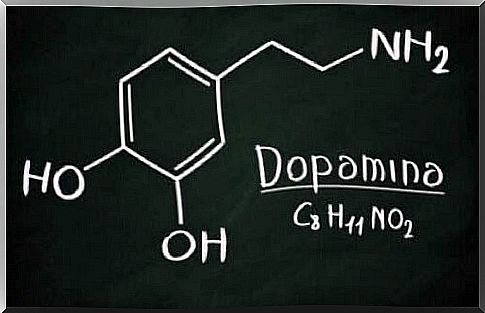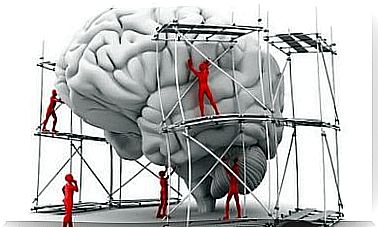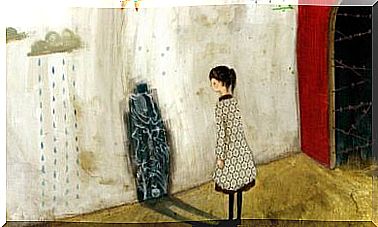Neuroleptic Malignant Syndrome

The use of antipsychotics is increasingly widespread. In fact, they are no longer used elusively for the treatment of psychotic disorders, but have been extended to the treatment of mood or personality disorders. One of their most adverse effects is neuroleptic malignant syndrome.
Although it cannot be considered a common complication, it is still particularly serious and fatal in 11.6% of cases. Specifically, neuroleptic malignant syndrome is a set of manifestations at the organic level, which can appear suddenly or progressively and require treatment as soon as possible.
What is neuroleptic malignant syndrome?
Neuroleptic malignant syndrome is a serious complication associated with psychotropic drug treatment. It is an alteration in the central nervous system that can even cause death.
The first case, related to the use of haloperidol, was described in 1960. At the beginning it was called akinetic hypertonic syndrome, since these are the most evident symptoms.
The syndrome is linked to agents that alter the neurotransmission of the dopaminergic system. In general, it is associated with the use of neuroleptics or antipsychotics, but it can also be caused by other drugs. As well as from their suspension.

The onset of this disease, however, is mainly associated with antipsychotics, such as butyrophenones or phenothiazines. The new generation antipsychotics, called atypical, are less likely to produce this syndrome. However, neuroleptic malignant syndrome can manifest itself in different situations, such as:
- Start of antipsychotic treatment (this is the most frequent case).
- Consumption of various antipsychotics.
- Increased dose of antipsychotics.
- Sudden discontinuation of dopaminergic agents such as L-dopa.
In any case, it is characterized by a wide clinical variability; which often makes diagnosis difficult. Which is why, timely diagnosis is essential to avoid serious complications.
Why does it occur?
Currently, there are two theories that attempt to explain the cause of the onset of neuroleptic malignant syndrome:
- Alteration in central neuroregulation of dopamine. This would be the result of the action of antipsychotics, and other drugs, on dopamine.
- Abnormal reaction of a skeletal muscle. Neuroleptics would induce an alteration of the normal availability of calcium in muscle cells in predisposed individuals.
The first hypothesis is the best known. Dopamine is an essential neurotransmitter and plays an important role in diseases of the central nervous system. It also performs important functions in the regulation of body temperature and in the control of muscle tone.
The second hypothesis is instead connected to malignant hyperthermia, due to the similarity with the syndrome in question. However, malignant hyperthermia generally occurs after anesthesia and not after the use of neuroleptics.
Symptoms of Neuroleptic Malignant Syndrome
Hyperthermia is the main feature of neuroleptic malignant syndrome. In this case, due to the importance of dopamine in regulating body temperature. It is usually accompanied by other symptoms, such as:
- Muscle hypertonia.
- Stiffness and tremor (symptoms similar to those produced by Parkinson’s disease).
- Alteration of the level of consciousness.
- Cardiovascular and respiratory instability.
Among the possible common complications, we find:
- Bronchoaspiration.
- Pulmonary edema.
- Kidney failure.
- Infectious processes.
- Bedsores.
- Neuropsychiatric alterations.

Treatment
For treatment of neuroleptic malignant syndrome to be effective, the disease must be diagnosed early. In the face of any clinical suspicion, the first thing to do is to immediately stop the administration of antipsychotics.
When, on the other hand, the cause is related to the sudden withdrawal of dopaminergic agents, they must be resumed as soon as possible. Thereafter, the treatment will have to be studied individually, based on the severity of the case:
- In mild cases: water and metabolic support.
- In severe cases : pharmacological agents, electroconvulsive therapy and intensive care monitoring.
Hydration is one of the most important aspects in the treatment of neuroleptic malignant syndrome. as well as hemodynamic support and balance of acid-base state and hypoxemia. It is also necessary to be vigilant for the appearance of serious complications.
In some cases it is necessary to administer a drug therapy. The most frequently used drugs are:
- Dopamine agonists. For example: bromocriptine, amantadine, apomorphine, lisuride and levodopa-carbidopa.
- Muscle relaxants, such as dantrolene (also useful in malignant hyperthermia).
Bromocriptine is generally the drug of choice. The treatment should be continued for at least 10 days after the episode has resolved, as it is necessary to completely eliminate the neuroleptic. Subsequently, it can be suspended gradually.
In severe cases, the application of electroconvulsive therapy is recommended. It facilitates dopaminergic activity, improving some of the symptoms. It is generally used in cases where drug treatment is unsuccessful.
However, the risks and benefits of the different therapeutic options must always be evaluated. In this sense, they will have to be chosen according to the needs of the patient and his conditions. In addition, it will be necessary to prevent exposure to the drug that caused the syndrome.









